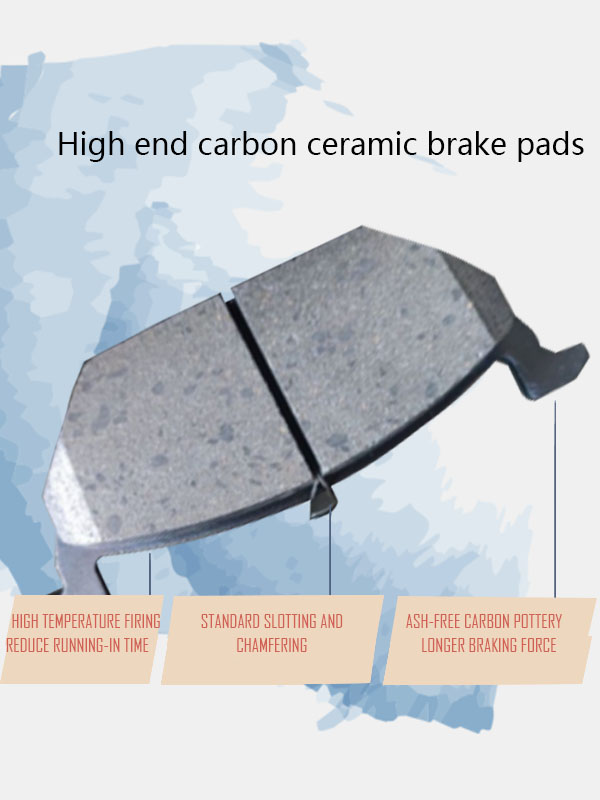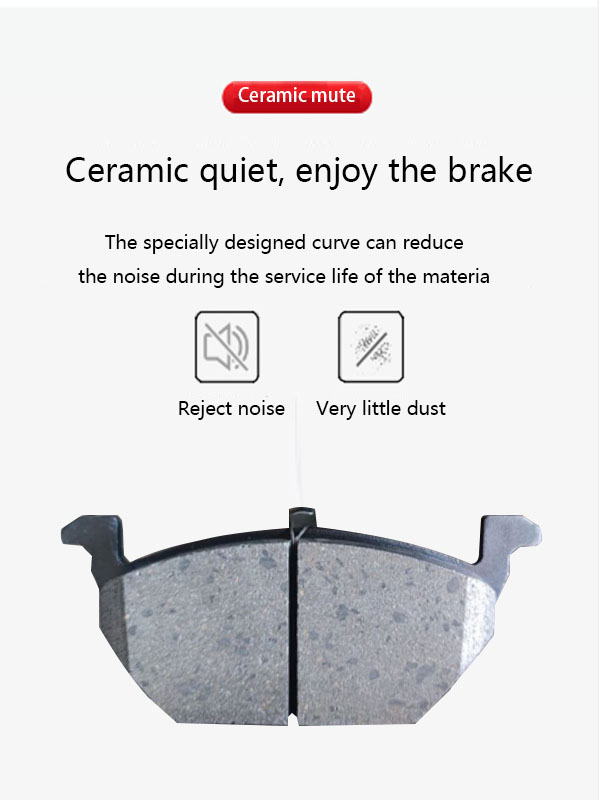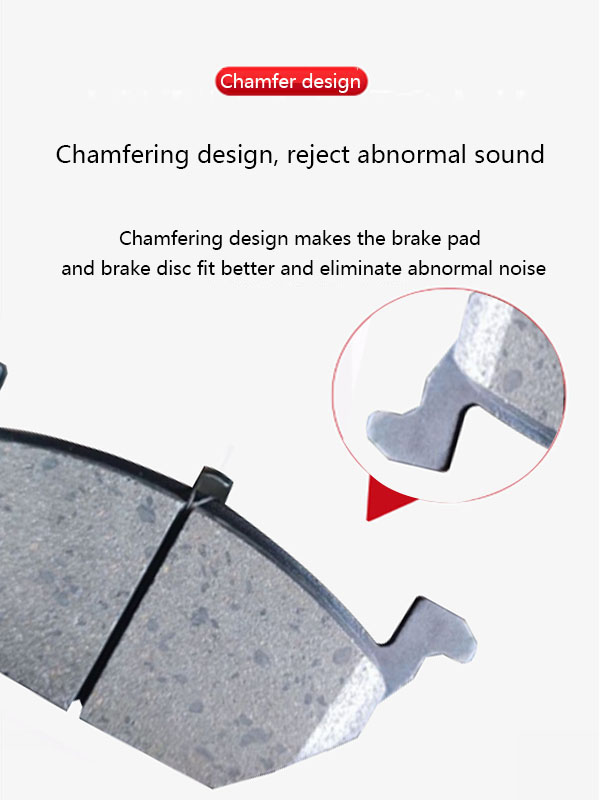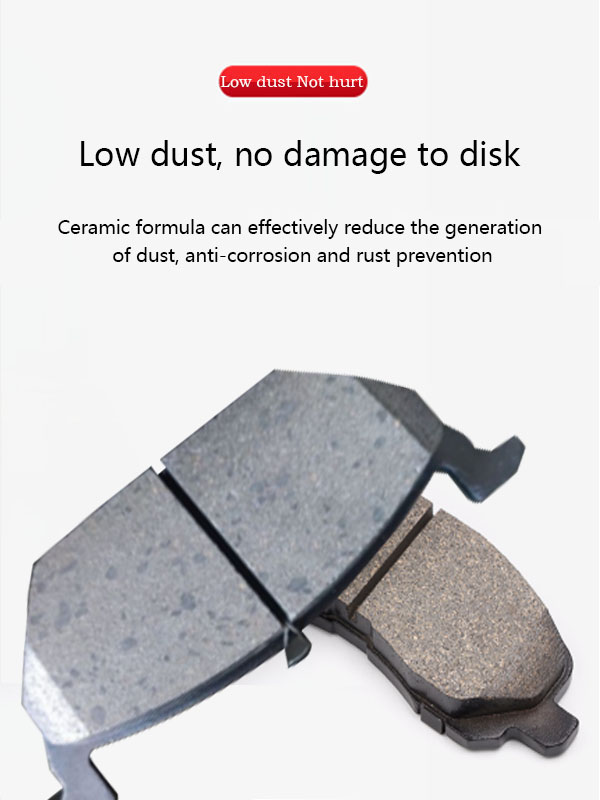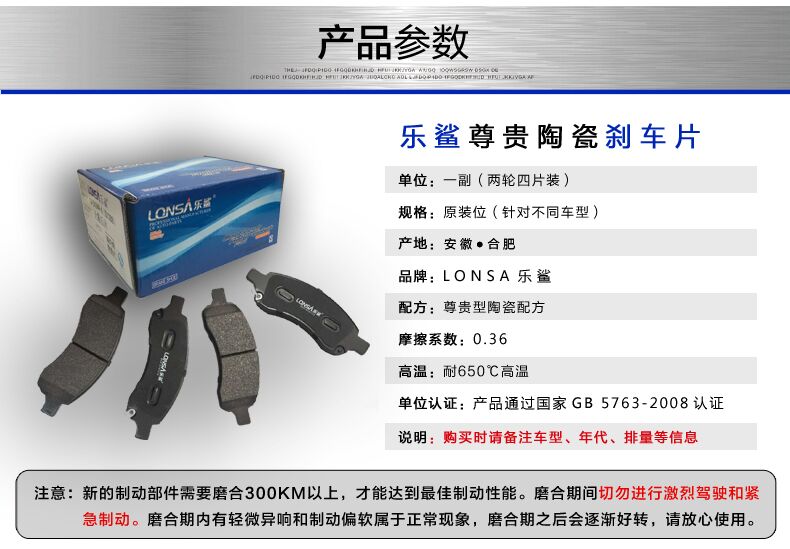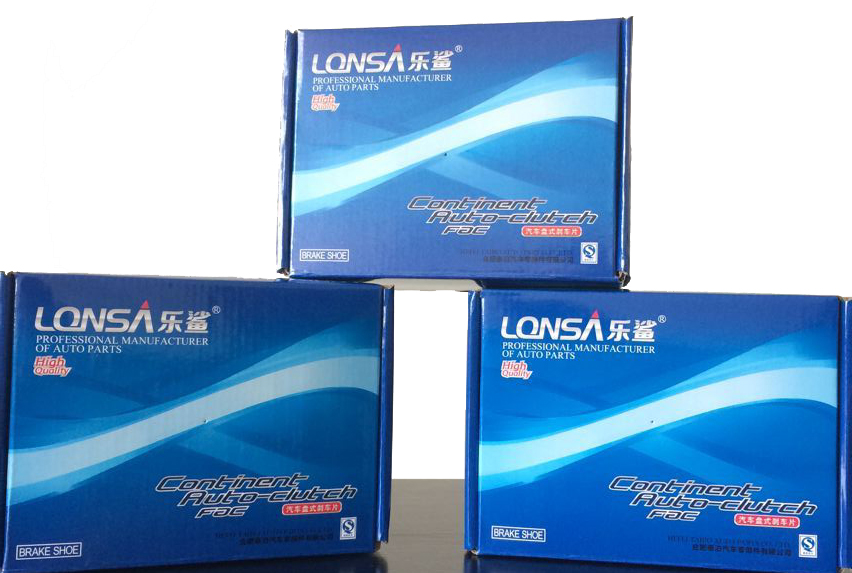Among the raw materials, artificial graphite is easy to scratch the brake disc. The hardness of artificial graphite is very soft, and the hardness of silicon carbide is close to diamond, which is enough to scratch the brake disc.
Most small factories use recycled graphite for brake pads (juedui won't use recycled graphite in big brand products). Some industries have no influence on silicon carbide in graphite, but silicon carbide becomes a very harmful substance when used in brake pads
If there are problems with the raw materials of brake pads, there should be problems in the same batch, which may involve a wide range. In this case, the brake pads must be replaced in time. If the brake disc is seriously damaged, the brake disc must be replaced.
Generally, the four friction surfaces of the two symmetrical brake discs are gnawed at the same time, and the position of the grooves is irregular, which may be high, low or all grooves.
The brake pad accessories will also notch the brake pads. Some brake pads have alarm pads (usually made of stainless steel). When the brake pads are worn to the alarm pad position, the alarm pad will rub against the brake disc and make a screeching sound to remind the owner to change the brake pads.
If the car owner doesn't care about the noise and lets the alarm pad and brake pad grind, the brake disc will be scratched. Generally, there is only one groove in this kind of pit. If it is not serious, the brake pad can be changed directly. When this happens, the position of the groove in the brake disc is fixed, that is, the position in contact with the alarm pad.
The installation problem caused the brake disc to be gnawed. If the brake pads are installed unevenly, one end or all of them will contact with the brake pads for a long time, which will lead to high-temperature friction between the brake disc and the brake pads for a long time. In this case, the brake disc is easy to be gnawed, and many grooves will appear. This situation is easy to appear on the rear brake. When someone drives, the handbrake is not put down, or the handbrake is not put to the end, which will cause the brake pads to drag for a long time It is easy to form this reason.
It can be seen from the brake disc that the disc changes color under long-term high temperature. If the time is long, the brake disc must be replaced.
If the brake pads are not installed smoothly, there will be gnawing grooves on the disk surface. Moreover, the width of the contact area between the brake pad and the brake disc surface depends on the position of the groove. Under such circumstances, we should not rush to replace the new brake pads and brake discs. It is possible that the discs will continue to be damaged. We should check the brake calipers carefully for any problems.
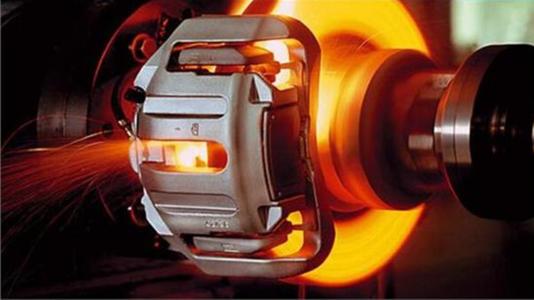
Why do the brake pads make grooves on the disc
The main body of the brake pad is generally divided into two parts: the friction layer and the steel back. The main difference between the good and bad quality of the brake pad is in the friction layer. The friction layer is a composite material, which is composed of organic fiber, inorganic fiber, mineral filler, phenolic resin, etc. after high temperature and high pressure, it is hot pressed.
At present, many brake pads will divide the friction layer into two layers, the bottom layer and the surface layer. The bottom layer is between the steel back and the surface layer. During the use of brake pads, the surface layer will be worn out first, then the bottom layer will be worn out, and then the steel back will be worn out. Generally, the brake pads should be replaced before the surface layer is worn out.
The problem of the brake pad itself causes the scratch of the brake disc. The layer material of the brake surface contains mineral fibers, which are formed by the melt of various minerals at high temperature and then by spinning.
However, when fibers are produced in the process of ore spinning, some of them can not be spun into fibers, and some of them form small balls (called "slag balls") whose hardness is much higher than that of fibrous ore. It can cause damage to the brake disc.
After the production of mineral fiber, the content of slag ball will be as high as 40% ~ 50%, and the enterprises of regular manufacturers will screen. The purity of mineral fiber will be increased to 95% ~ 98.5%. However, it still contains 1.5% ~ 5% slag balls (the current process can not remove all slag balls).
Generally, the mineral fiber used in the disc fabric layer is of this type. There will inevitably be a small amount of slag balls. It can cause damage to the brake disc. If there are too many slag balls in the fabric layer of the brake pad, the brake disc will be grooved. If the situation is serious, the brake pad and the brake disc need to be replaced together.
The friction layer is divided into fabric layer and bottom material layer. When braking, the fabric layer will be worn first, and then the bottom layer will be worn.
The function of the substrate layer is different from that of the fabric layer. The substrate layer generally improves the bonding strength and heat insulation. Because when designing the formula, the focus is not on the friction performance, the materials and fabric layers used are different.
The content of mineral fiber used in the fabric layer is 95% ~ 98.5%. In the substrate layer, mineral fiber with high slag ball content (cheap) can be used. The slag ball content may be 10% or 20%. Some manufacturers will use glass fiber in order to improve the strength and reduce the cost.
For enterprises with high quality requirements, aramid fiber will be added to the substrate layer to increase the strength.
The thickness of the brake pad needs to be checked regularly to see if the fabric layer has been worn out. After the fabric layer is ground, the next friction with the brake disc is the bottom layer.
The main function of the substrate layer is not friction. If the brake pads are not replaced, the brake disc may form grooves after a long time. (now many brake pads have alarm lines. When they rub to the alarm line, they will hear obvious noise. At this time, they need to change the brake pads. When they listen to the shriek, they have hurt the disc.).
In fact, the hard material in the brake pad is not the slag ball in the fiber. Under the high temperature generated by the brake, the glass fiber will also form glass beads with very high hardness. There are slag balls in the ceramic fiber, and many natural mineral fillers may contain impurities.
Therefore, when choosing materials, regular manufacturers of brake pads will choose raw materials with little or no hard material. Glass fiber, for example, is no longer used in disks. But like mineral fiber, as one of the main materials of brake pad, there is no better material to replace.
The main body of the brake pad is generally divided into two parts: the friction layer and the steel back. The main difference between the good and bad quality of the brake pad is in the friction layer. The friction layer is a composite material, which is composed of organic fiber, inorganic fiber, mineral filler, phenolic resin, etc. after high temperature and high pressure, it is hot pressed.
At present, many brake pads will divide the friction layer into two layers, the bottom layer and the surface layer. The bottom layer is between the steel back and the surface layer. During the use of brake pads, the surface layer will be worn out first, then the bottom layer will be worn out, and then the steel back will be worn out. Generally, the brake pads should be replaced before the surface layer is worn out.
The problem of the brake pad itself causes the scratch of the brake disc. The layer material of the brake surface contains mineral fibers, which are formed by the melt of various minerals at high temperature and then by spinning.
However, when fibers are produced in the process of ore spinning, some of them can not be spun into fibers, and some of them form small balls (called "slag balls") whose hardness is much higher than that of fibrous ore. It can cause damage to the brake disc.
After the production of mineral fiber, the content of slag ball will be as high as 40% ~ 50%, and the enterprises of regular manufacturers will screen. The purity of mineral fiber will be increased to 95% ~ 98.5%. However, it still contains 1.5% ~ 5% slag balls (the current process can not remove all slag balls).
Generally, the mineral fiber used in the disc fabric layer is of this type. There will inevitably be a small amount of slag balls. It can cause damage to the brake disc. If there are too many slag balls in the fabric layer of the brake pad, the brake disc will be grooved. If the situation is serious, the brake pad and the brake disc need to be replaced together.
The friction layer is divided into fabric layer and bottom material layer. When braking, the fabric layer will be worn first, and then the bottom layer will be worn.
The function of the substrate layer is different from that of the fabric layer. The substrate layer generally improves the bonding strength and heat insulation. Because when designing the formula, the focus is not on the friction performance, the materials and fabric layers used are different.
The content of mineral fiber used in the fabric layer is 95% ~ 98.5%. In the substrate layer, mineral fiber with high slag ball content (cheap) can be used. The slag ball content may be 10% or 20%. Some manufacturers will use glass fiber in order to improve the strength and reduce the cost.
For enterprises with high quality requirements, aramid fiber will be added to the substrate layer to increase the strength.
The thickness of the brake pad needs to be checked regularly to see if the fabric layer has been worn out. After the fabric layer is ground, the next friction with the brake disc is the bottom layer.
The main function of the substrate layer is not friction. If the brake pads are not replaced, the brake disc may form grooves after a long time. (now many brake pads have alarm lines. When they rub to the alarm line, they will hear obvious noise. At this time, they need to change the brake pads. When they listen to the shriek, they have hurt the disc.).
In fact, the hard material in the brake pad is not the slag ball in the fiber. Under the high temperature generated by the brake, the glass fiber will also form glass beads with very high hardness. There are slag balls in the ceramic fiber, and many natural mineral fillers may contain impurities.
Therefore, when choosing materials, regular manufacturers of brake pads will choose raw materials with little or no hard material. Glass fiber, for example, is no longer used in disks. But like mineral fiber, as one of the main materials of brake pad, there is no better material to replace.


